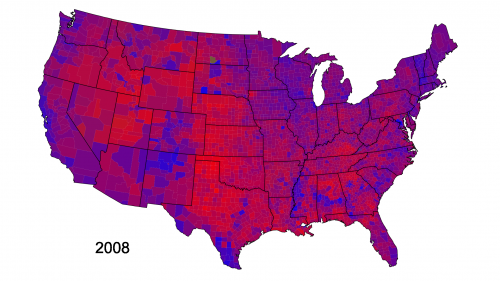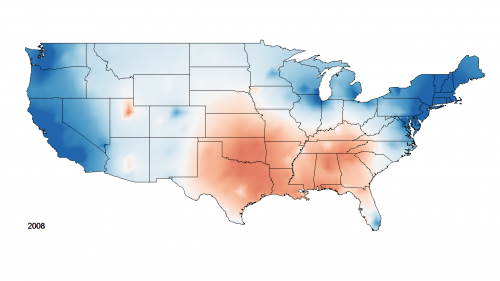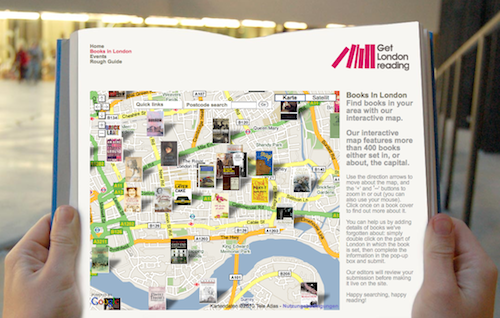Cloropleths vs Isarithmic: Voting within or without boundaries
There have been two major ways to understand populations and their territorial distribution. In one kind, typified by choropleth maps, the density or degree of a feature is mapped in pre-given political units.*

As second kind of map, known as isarithmic mapping (…), shows change varying continiously over space.*

Where chloropleths maps produce a sense of populations as contained within boundaries, isarithmic mapping emphasizes continual variation and gradual change without clear differentiations.*
References
- The Book: * Jeremy W. Crampton: Mapping: a critical introduction to cartography and GIS, Wiley and Blackwell, 2010, p. 149
- The Blog: More details about the process and the data behind these maps is available on David B. Sparks’ blog.
- The Video: Isarithmic History of the Two-Party Presidential Vote




